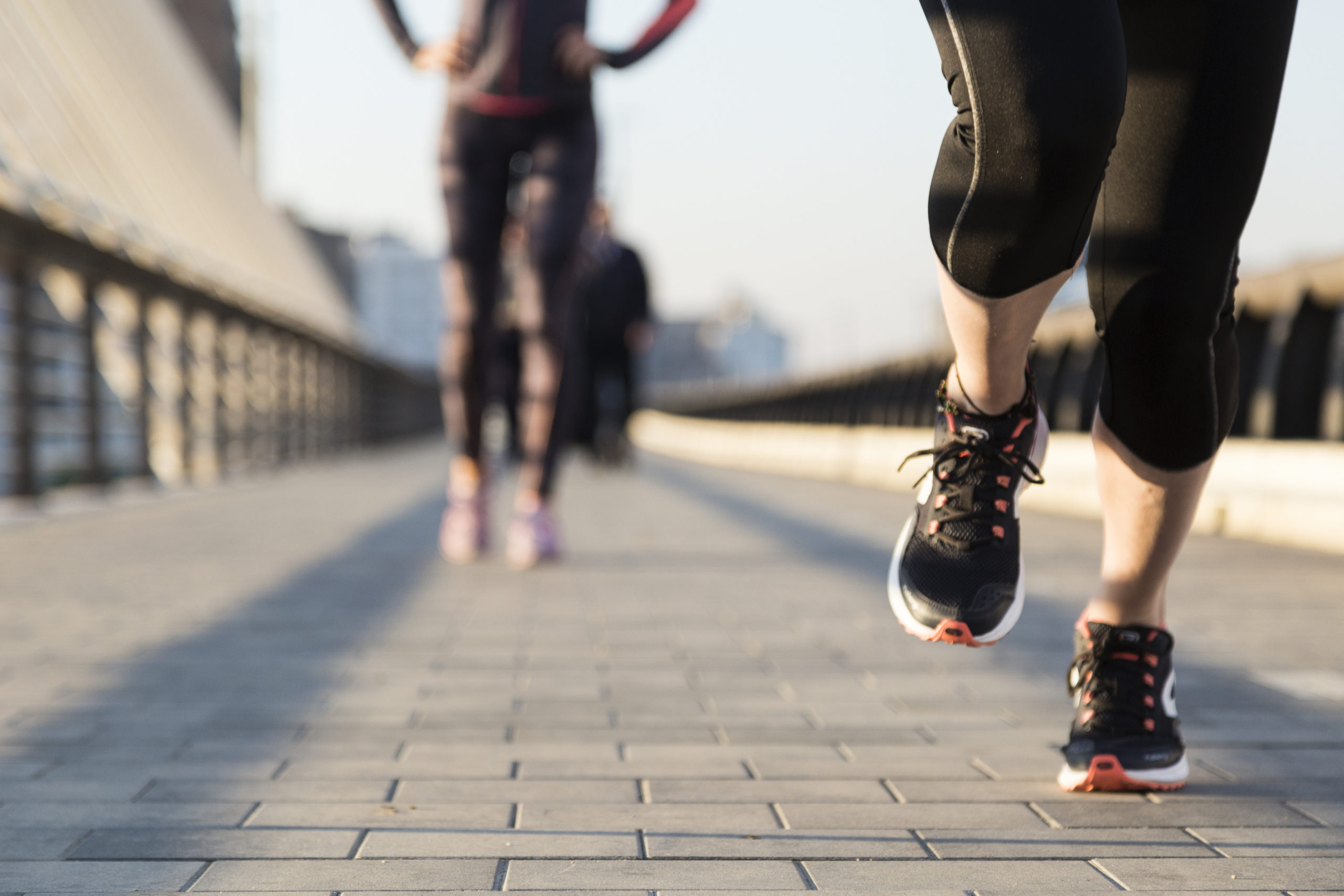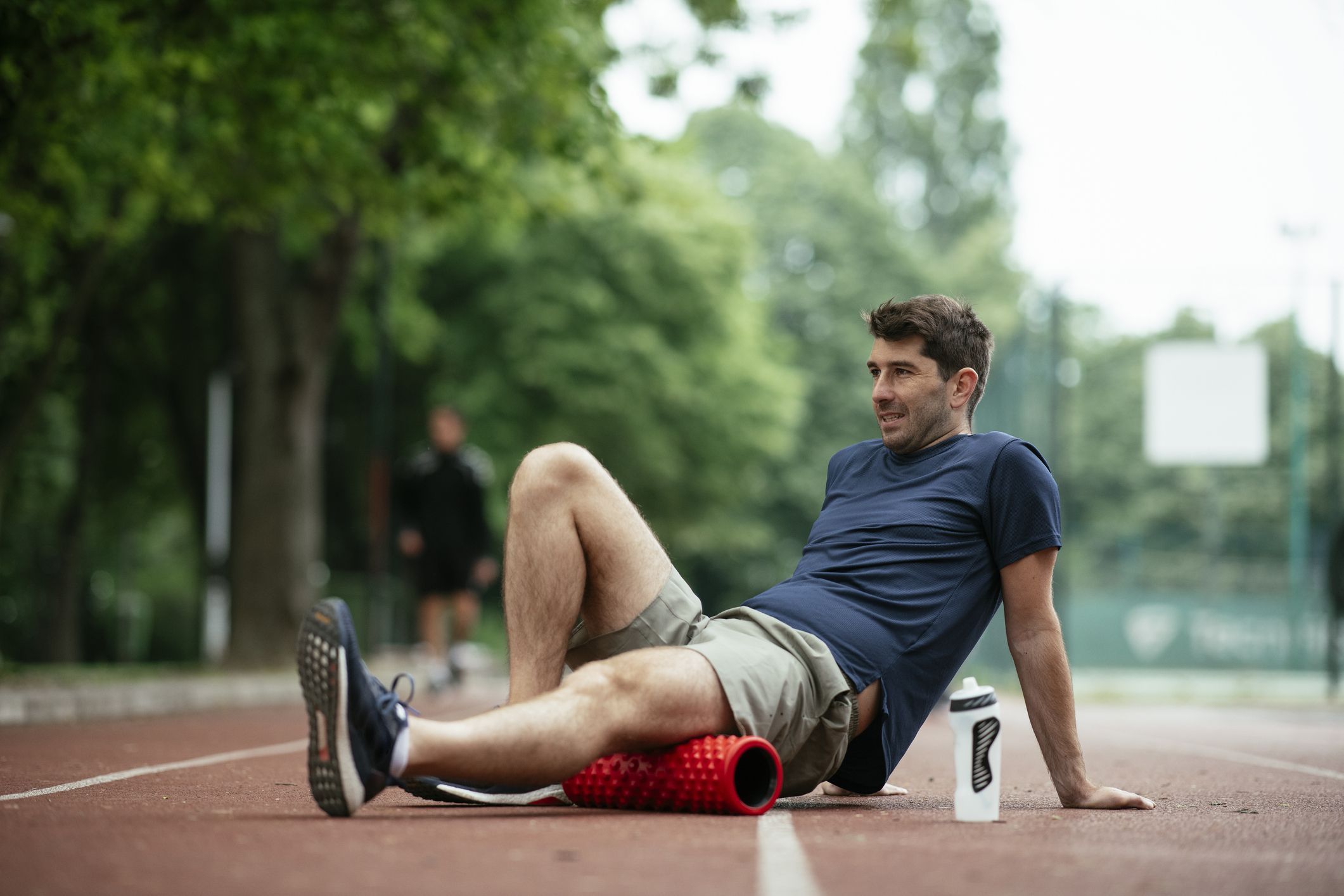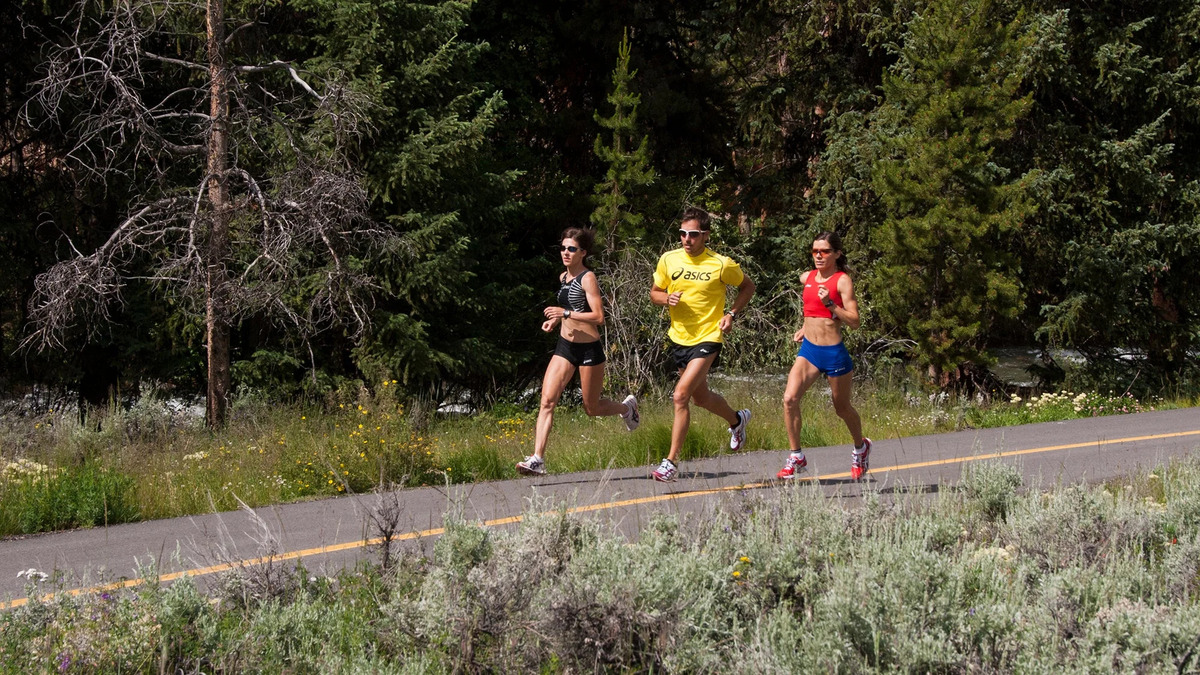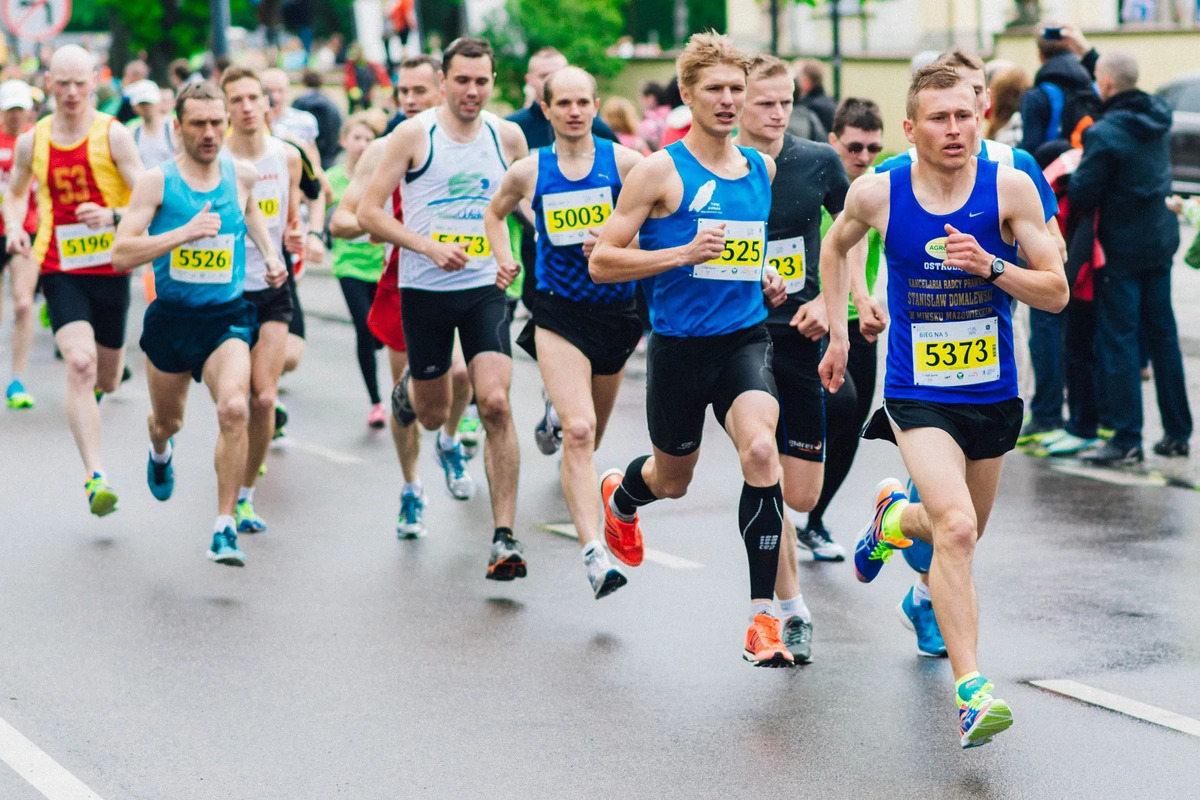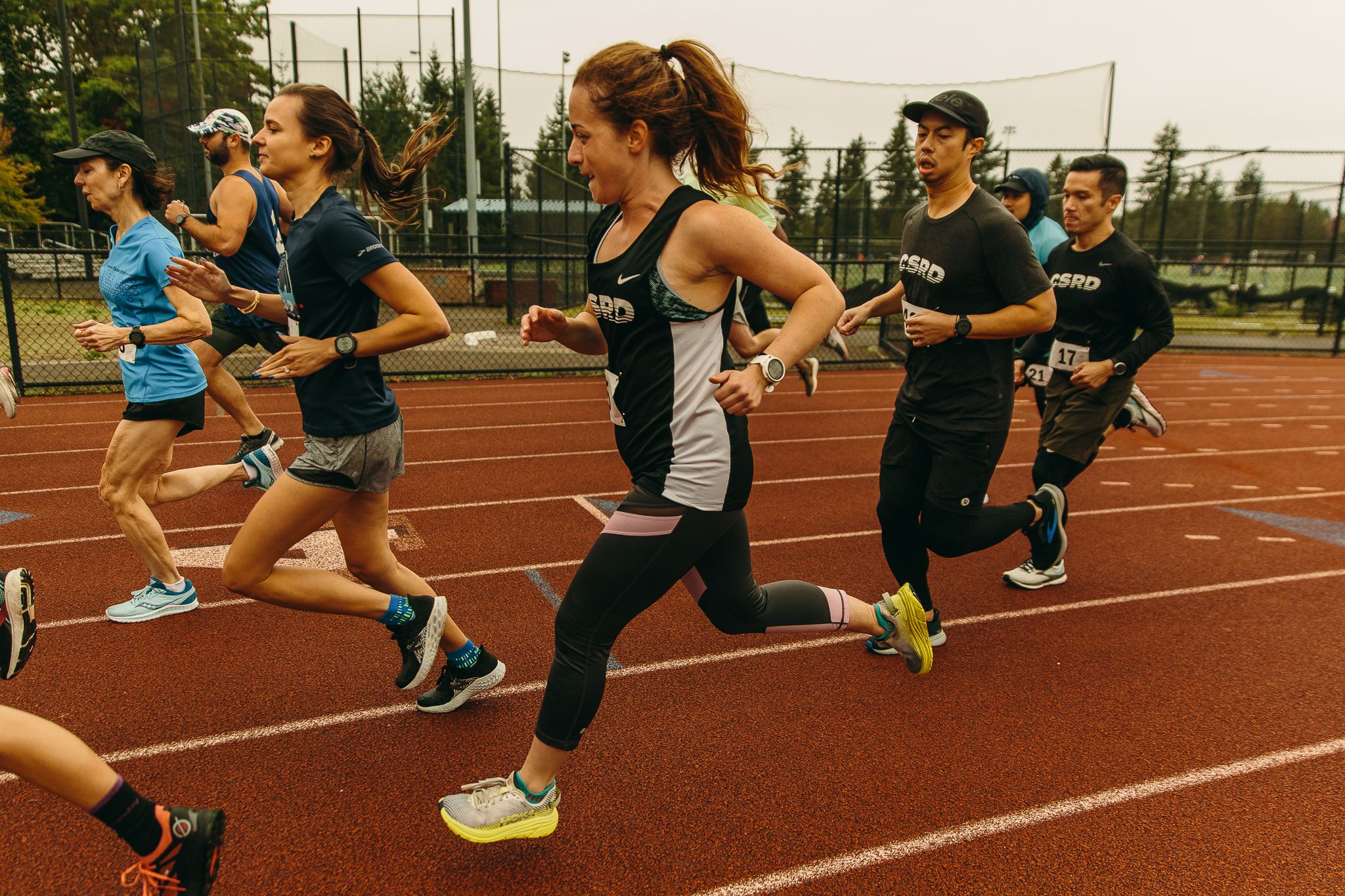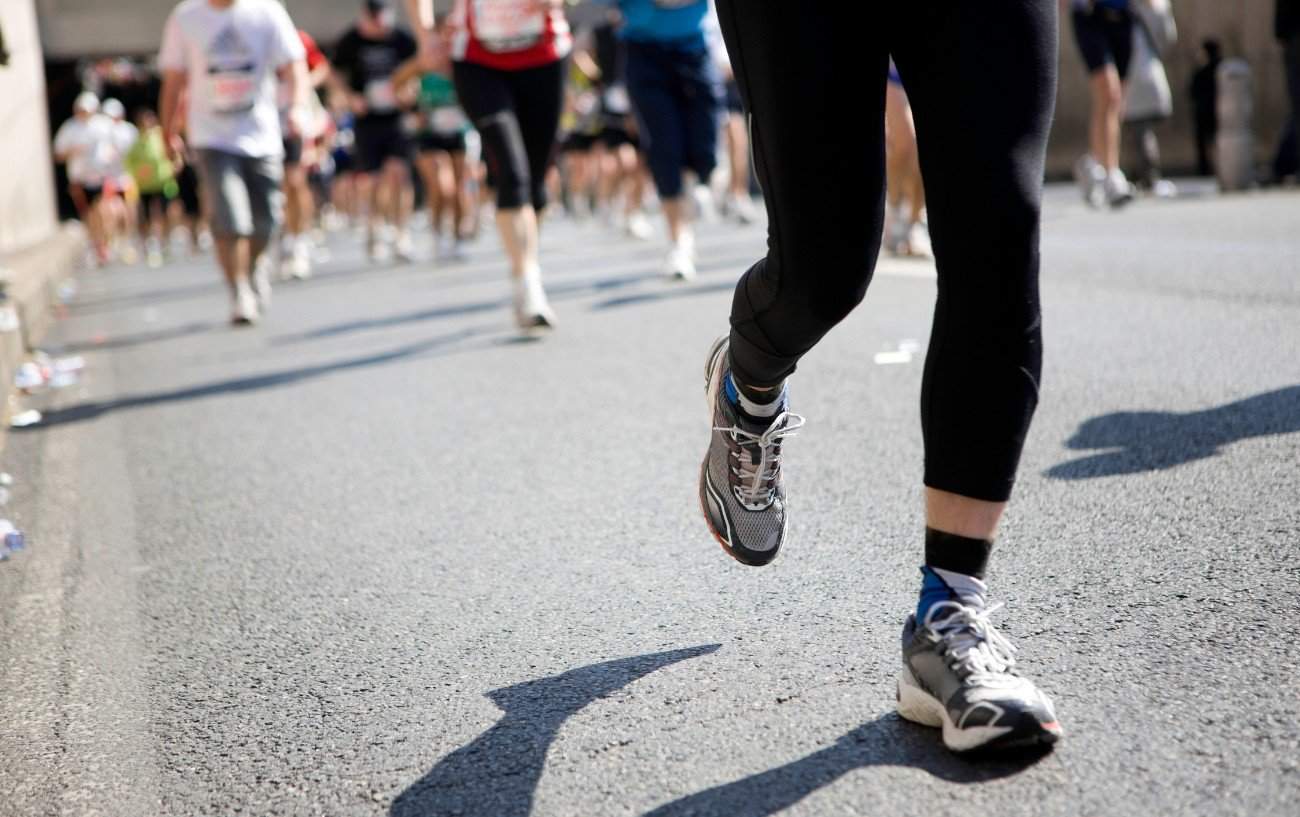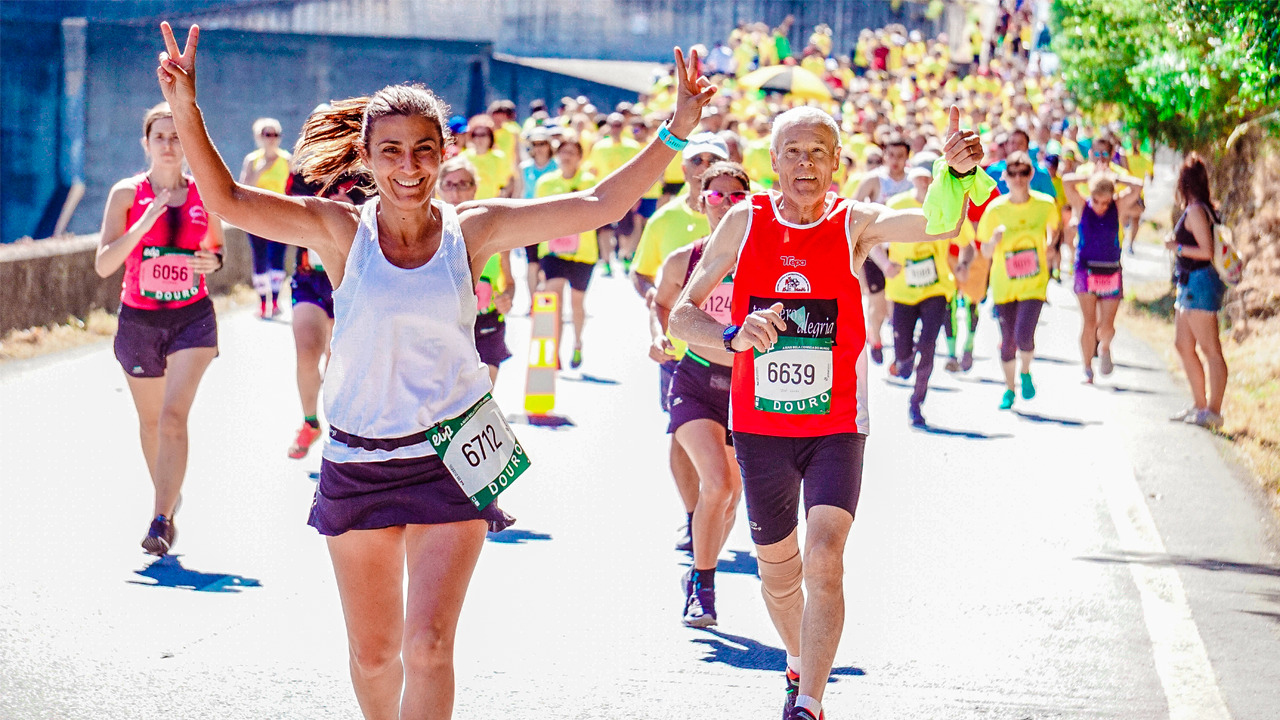Home>Misc>Featured>How Sore Should I Be After A Half Marathon
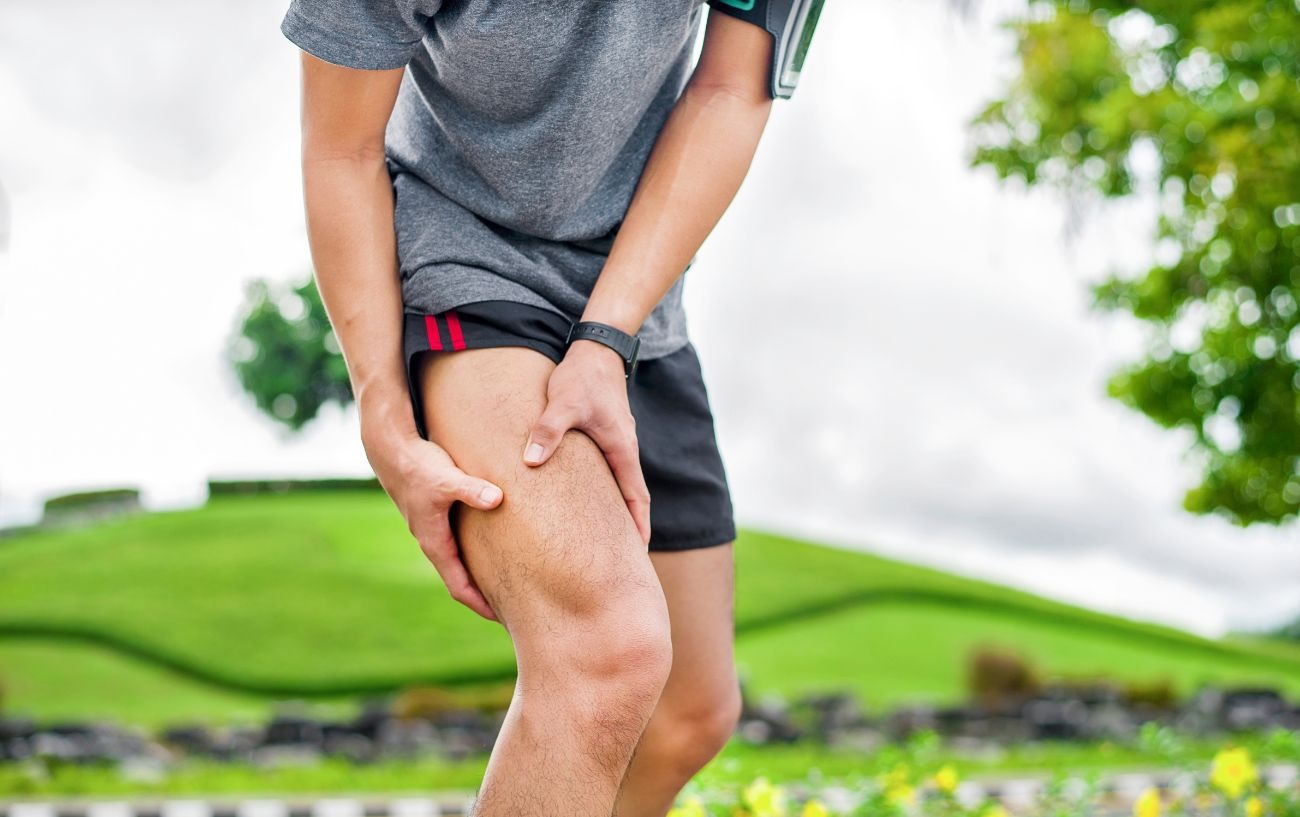

Featured
How Sore Should I Be After A Half Marathon
Modified: January 2, 2024
Featured: Find out how sore you should expect to be after completing a half marathon and discover tips for effective recovery.
Introduction
Completing a half marathon is an incredible accomplishment that requires months of training and dedication. It’s a test of physical and mental endurance, pushing your body to its limits. But once the race is over, you may find yourself asking, “How sore should I be after a half marathon?”
Post-race soreness is a common experience among runners, and it’s a sign that your muscles have been put to the test. However, the degree of soreness can vary greatly from person to person. Some runners may feel only a mild discomfort, while others may experience more intense muscle soreness that lasts for several days.
Understanding and managing post-half marathon soreness is important for your recovery and future running goals. In this article, we will explore the causes of post-race soreness, the factors that can affect its severity, and provide tips on how to manage and differentiate normal soreness from more serious injuries.
Delayed Onset Muscle Soreness, or DOMS, is the commonly experienced muscle soreness that occurs a day or two after intense exercise. DOMS is caused by small, microscopic damage to the muscle fibers during exercise, particularly when performing eccentric movements, such as downhill running or prolonged downhill sections during a race.
The severity of DOMS can vary depending on a variety of factors including the intensity and duration of the exercise, your individual fitness level, and your body’s ability to repair and recover. Factors such as age, hydration, nutrition, and previous training can also play a role in the degree of post-race soreness.
It’s important to note that not all soreness after a half marathon is necessarily a bad thing. In fact, a certain level of soreness is to be expected as it signifies that your muscles have undergone stress and are adapting to the demands placed upon them. However, severe and prolonged muscle soreness can be a sign of overexertion or potential injury.
Rest and recovery are crucial after completing a half marathon. Your body needs time to repair and rebuild muscle tissue, replenish energy stores, and rebalance hormones. Neglecting proper rest and recovery can increase the risk of injury and negatively impact your future performance. So, resist the temptation to jump back into intense training right away, and instead prioritize rest and active recovery strategies to aid in the healing process.
Understanding DOMS (Delayed Onset Muscle Soreness)
Delayed Onset Muscle Soreness, or DOMS, is a common condition experienced by runners and athletes after intense exercise, including participating in a half marathon. It typically occurs within 24 to 48 hours after the exercise, hence the term “delayed onset.” DOMS is characterized by muscle stiffness, tenderness, and aching sensations.
The exact cause of DOMS is still not fully understood, but current research suggests that it is primarily caused by microscopic damage to muscle fibers during exercise. When you push your muscles beyond their usual limits, such as during a half marathon, the muscles experience physical stress that leads to small tears in the muscle fibers. These tears trigger an inflammatory response in the body, which results in the characteristic soreness and stiffness.
Eccentric exercise, which involves lengthening of the muscle under tension, is especially known to cause DOMS. In a half marathon, downhill running and the repetitive impact of foot strikes can elicit eccentric muscle contractions, making it a prime contributor to post-race soreness.
It’s important to note that DOMS is a normal physiological response to exercise and is not an indication of injury. In fact, it signifies that your muscles are adapting and getting stronger. However, the severity and duration of DOMS can vary from person to person, depending on several factors:
- Fitness Level: Individuals who are less fit or have not trained adequately may experience more pronounced DOMS compared to seasoned athletes.
- Intensity and Duration: The more intense and prolonged the exercise, the greater the muscle damage and subsequent DOMS.
- Prior Training: Regular training and conditioning can help reduce the impact of DOMS as your muscles become more accustomed to the stress and strain of exercise.
- Age: As we age, our muscles may take longer to recover, resulting in more prolonged DOMS.
- Hydration and Nutrition: Proper hydration and balanced nutrition play a crucial role in muscle recovery and minimizing DOMS.
It’s essential to differentiate between normal DOMS and potential injury. While DOMS typically resolves within a few days, an injury will persist and may be accompanied by other symptoms such as sharp pain, swelling, or limited range of motion. If you experience anything beyond the typical soreness associated with DOMS, it’s advisable to seek medical attention to rule out any serious injury.
To manage DOMS, there are several strategies worth considering. Active recovery, such as light jogging, swimming, or cycling, can help improve blood flow to the muscles and promote faster recovery. Gentle stretching, foam rolling, and massage can also provide relief and aid in reducing muscle soreness. Additionally, adequate rest and sleep are crucial components of the recovery process.
Understanding DOMS and how it manifests in your body can help you better prepare for the post-half marathon soreness. By incorporating proper recovery techniques and listening to your body, you can bounce back faster and continue your running journey with less discomfort.
Factors Affecting Post-Half Marathon Soreness
Post-half marathon soreness can vary greatly from person to person, and several factors play a role in determining the intensity and duration of the soreness experienced. Understanding these factors can help you manage and minimize post-race soreness for a quicker recovery. Here are some of the key factors that influence post-half marathon soreness:
- Training Intensity: The intensity of your training leading up to the half marathon can significantly impact post-race soreness. If you consistently pushed yourself to the limit during your training, your muscles may experience more stress and, subsequently, greater soreness. Gradually increasing your training intensity over time can help mitigate the impact on your muscles.
- Muscle Adaptation: If you are new to distance running or haven’t been training consistently, your muscles may take longer to adapt to the demands of a half marathon. In these cases, you may experience more acute soreness as your muscles are not yet accustomed to the prolonged duration and distance involved.
- Terrain and Elevation: The type of terrain and elevation changes encountered during the half marathon can contribute to post-race soreness. Uphill sections engage different muscle groups and can lead to more significant muscle fatigue and soreness. Similarly, downhill running places additional stress on the muscles, particularly during the eccentric contraction phase, which can result in more pronounced soreness.
- Hydration and Nutrition: Proper hydration and nutrition play a crucial role in muscle recovery and minimizing post-race soreness. Dehydration can increase muscle fatigue and exacerbate soreness, while a balanced diet rich in carbohydrates, protein, and healthy fats provides the necessary nutrients for muscle repair and recovery.
- Rest and Recovery: Insufficient rest and inadequate recovery practices can prolong post-half marathon soreness. Giving your body enough time to rest and repair is essential for muscle recovery. Incorporating rest days into your training schedule, getting adequate sleep, and engaging in active recovery activities, such as light stretching and low-impact exercises, can help alleviate soreness and speed up the recovery process.
- Individual Factors: Each individual’s body responds differently to the same level of exertion. Factors such as age, genetics, overall fitness level, and previous running experience can also influence post-half marathon soreness. Younger individuals and those with a higher level of fitness may experience less soreness compared to older or less fit individuals.
It’s important to remember that post-half marathon soreness is a normal part of the recovery process and an indication that your muscles are adapting and getting stronger. However, excessive or persistent soreness that inhibits your daily activities or is accompanied by other symptoms should not be ignored and may require medical attention to rule out injury.
By taking into account these factors and implementing appropriate recovery strategies, you can effectively manage post-half marathon soreness and promote a faster and smoother recovery.
Importance of Rest and Recovery
After completing a half marathon, it’s tempting to immediately start thinking about your next running goal or jump back into intense training. However, it’s crucial to prioritize rest and recovery to allow your body to heal and adapt after the demanding race effort. Rest and recovery are essential components of a well-rounded training plan and play a significant role in optimizing performance and preventing injuries. Here’s why rest and recovery are so important:
1. Muscle Repair and Rebuilding: During a half marathon, your muscles undergo significant stress and micro-tears. Rest and recovery provide the necessary time for your muscles to repair and rebuild, ultimately making them stronger and more resilient. Without adequate rest, you increase the risk of overuse injuries and prevent your muscles from adapting and improving.
2. Energy Replenishment: Participating in a half marathon depletes your energy stores, such as glycogen in your muscles and liver. Rest and recovery allow your body to replenish these energy stores, supporting optimal performance in future training sessions and races. Adequate nutrition and hydration during the recovery period are essential to support this replenishment process.
3. Hormonal Balance: Intense training and racing can disrupt the delicate balance of hormones in your body. Rest and recovery help restore hormonal equilibrium, which is crucial for overall well-being and long-term performance improvements. Insufficient rest and chronic overtraining can lead to hormonal imbalances, resulting in decreased energy levels, disrupted sleep patterns, and decreased immune function.
4. Injury Prevention: Rest and recovery play a significant role in injury prevention. Overtraining and pushing your body beyond its limits increase the risk of overuse injuries, stress fractures, and other musculoskeletal issues. Taking adequate time to rest allows your body to repair and strengthen damaged tissues, reducing the likelihood of injury. It also provides an opportunity to address any imbalances or weaknesses that may have been exacerbated during the race.
5. Mental Restoration: Rest and recovery are not just physical. They also provide an opportunity for mental rejuvenation. Running a half marathon requires mental strength, focus, and determination. Taking time off from intense training allows you to recharge mentally, prevent burnout, and maintain a healthy relationship with running.
6. Performance Enhancement: Contrary to popular belief, more is not always better when it comes to training. Incorporating strategic rest and recovery into your training plan can actually enhance your performance. By allowing your body to recover and adapt, you’ll be able to train at a higher quality and intensity when you resume your workouts, leading to improved performance in future races.
Remember, rest and recovery are not a sign of weakness or laziness. They are essential components of the training process and critical for long-term success as a runner. Listen to your body, prioritize rest, and allow yourself time to recover fully after each half marathon. Your body will thank you, and you’ll come back stronger and more prepared for your next running challenge.
Tips for Managing Post-Half Marathon Soreness
Post-half marathon soreness is a natural consequence of pushing your body to its limits during the race. While it may be unavoidable, there are several strategies you can implement to help manage and alleviate the soreness, allowing for a quicker recovery. Here are some tips to help you navigate the post-race soreness:
- Active Recovery: Engage in light physical activity to promote blood flow to the muscles and facilitate the removal of waste products. Gentle walking, swimming, or cycling can help reduce stiffness and soreness.
- Stretching and Foam Rolling: Incorporate gentle stretching and foam rolling exercises to help release tension and relieve muscle soreness. Focus on the major muscle groups used during the half marathon, such as the quadriceps, hamstrings, calves, and hips.
- Ice or Cold Therapy: Applying ice or cold packs to sore muscles can help reduce inflammation and alleviate pain. Use ice packs for 15 to 20 minutes at a time, allowing sufficient breaks between applications to prevent frostbite.
- Heat Therapy: Alternating between cold and heat therapy can also be effective in managing post-race soreness. Apply a warm compress or take a warm bath to increase blood flow and relax the muscles.
- Hydration: Stay properly hydrated to support muscle recovery and minimize soreness. Drinking water and consuming electrolyte-rich fluids can help replenish lost fluids and essential minerals.
- Nutrition: Optimize your nutrition to aid in the recovery process. Consume a balanced diet that includes quality protein, carbohydrates, and healthy fats to support muscle repair and replenishment of energy stores.
- Rest and Sleep: Allow your body adequate time to rest and recover. Get enough sleep each night to support the healing process and promote overall well-being.
- Gradual Return to Running: While rest is important, gradually reintroduce running into your routine. Start with shorter, easy-paced runs and gradually increase the duration and intensity as your body allows. Listen to your body and adjust your training accordingly.
- Seek Professional Help: If you experience persistent or debilitating soreness that doesn’t improve with self-care measures, consider seeking guidance from a sports therapist or physical therapist. They can assess your condition, provide targeted treatments, and offer personalized advice for optimal recovery.
Remember, each person’s body is unique, and what works for one individual may not work for another. Listen to your body and adjust these tips to suit your needs. Don’t be discouraged by post-half marathon soreness; it’s a temporary phase that indicates your effort and commitment. By implementing these strategies, you’ll be able to manage the soreness and accelerate your recovery, allowing you to get back to running stronger and more prepared for your next challenge.
Recognizing the Difference Between Normal Soreness and Injury
After completing a half marathon, it’s common to experience muscle soreness. However, it’s crucial to be able to distinguish between normal post-race soreness (DOMS) and potential injuries. Recognizing the difference can help you appropriately address any issues and prevent further damage. Here are some guidelines to help you differentiate between normal soreness and injury:
Duration: Normal soreness typically lasts for a few days up to a week, gradually improving with time and proper self-care. If the pain persists or intensifies beyond this timeframe, it may indicate an underlying injury and should not be ignored.
Location and Intensity: Pay attention to the location and intensity of the pain. DOMS tends to be more generalized, affecting multiple muscle groups involved in the race. Injury-related pain, on the other hand, may be localized to a specific area, such as a sharp pain in the knee or a throbbing sensation in the Achilles tendon.
Sharp or Stabbing Pain: Normal soreness is often described as a dull ache or stiffness. If you experience a sharp or stabbing pain that prevents you from bearing weight or significantly limits your range of motion, it could be indicative of a more serious injury, such as a muscle strain, ligament tear, or stress fracture.
Swelling and Inflammation: Look out for signs of swelling, redness, or noticeable inflammation around a specific area. These symptoms are usually associated with acute injuries and require medical attention.
Altered Movement Patterns: If you notice a significant change in your movement patterns or a loss of function, such as difficulty bending your knee or walking normally, it may indicate a more severe injury that warrants medical evaluation.
Pain during Rest: While it’s normal to experience some discomfort during activity, persistent pain even at rest is not typical and could be a sign of an underlying injury. Pain that interrupts your sleep or daily activities should be evaluated by a medical professional.
Previous Injuries or Chronic Issues: A history of previous injuries or chronic conditions may increase your susceptibility to further damage. If you have a preexisting condition that worsens or flares up after the race, consult with a healthcare provider for proper evaluation and guidance.
Listen to Your Body: Trust your instincts and listen to your body. If something doesn’t feel right or if your pain is not improving with rest and self-care measures, seek medical attention. It’s better to be cautious and get a professional evaluation to ensure a timely and accurate diagnosis.
Remember, it’s essential to differentiate between normal soreness and potential injuries to prevent further harm. While post-half marathon soreness is expected, persistent or worsening pain, sharp or localized discomfort, and other concerning symptoms should not be ignored. Seeking appropriate medical advice can help you receive the necessary treatment and get back to running safely.
Conclusion
Completing a half marathon is an incredible achievement that tests your physical and mental limits. Post-race soreness is a natural part of the process, indicating that your muscles have been challenged and are adapting to the demands of the race. Understanding and managing post-half marathon soreness is crucial for your recovery and overall running journey.
Delayed Onset Muscle Soreness (DOMS), the soreness experienced a day or two after intense exercise, is a normal physiological response. Factors such as training intensity, fitness level, terrain, hydration, nutrition, and rest play a significant role in the severity and duration of soreness. Recognizing the difference between normal soreness and potential injuries is essential to prevent further harm and seek appropriate medical attention when necessary.
To manage post-half marathon soreness, it’s important to prioritize rest and recovery. Engaging in active recovery, gentle stretching, and utilizing techniques like ice or heat therapy can provide relief and promote faster healing. Proper nutrition, hydration, and adequate sleep are also key factors in the recovery process.
While post-race soreness may be uncomfortable, it is temporary. By implementing these strategies and listening to your body, you can effectively manage soreness, prevent injuries, and continue your running journey with improved performance and overall well-being.
Remember, each runner’s experience with post-half marathon soreness may vary. Experiment with different self-care techniques and recovery strategies to find what works best for you. Be patient, be kind to your body, and celebrate the accomplishment of completing a half marathon, knowing that with proper care, you’ll be ready to take on future challenges.


